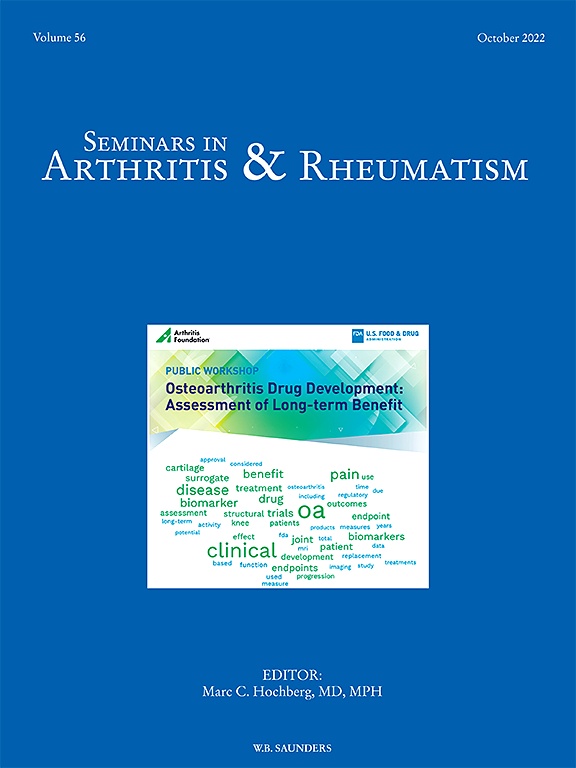
Glucosamine sulfate reduced knee OA incidence in overweight females at 2.5 years

Glucosamine sulfate reduced knee OA incidence in overweight females at 2.5 years
The role of diet and exercise and of glucosamine sulfate in the prevention of knee osteoarthritis: Further results from the PRevention of knee Osteoarthritis in Overweight Females (PROOF) study.
Semin Arthritis Rheum. 2016 Feb;45(4 Suppl):S42-8Did you know you're eligible to earn 0.5 CME credits for reading this report? Click Here
Synopsis
This study reports a post-hoc analysis of the PRevention of knee Osteoarthritis in Overweight Females (PROOF) study. 407 females, between the ages of 50 and 60, at high risk of developing knee osteoarthritis (OA) were included. Patients were randomized using a 2x2 factorial design into 4 groups, that received either glucosamine sulfate (1500mg orally per day) and a tailored diet and exercise progr...
To view the full content, login to your account,
or start your 30-day FREE Trial today.
FREE TRIAL
LOGIN
Forgot Password?
Explore some of our unlocked ACE Reports below!

Learn about our AI Driven
High Impact Search Feature
Our AI driven High Impact metric calculates the impact an article will have by considering both the publishing journal and the content of the article itself. Built using the latest advances in natural language processing, OE High Impact predicts an article’s future number of citations better than impact factor alone.
Continue



 LOGIN
LOGIN

Join the Conversation
Please Login or Join to leave comments.